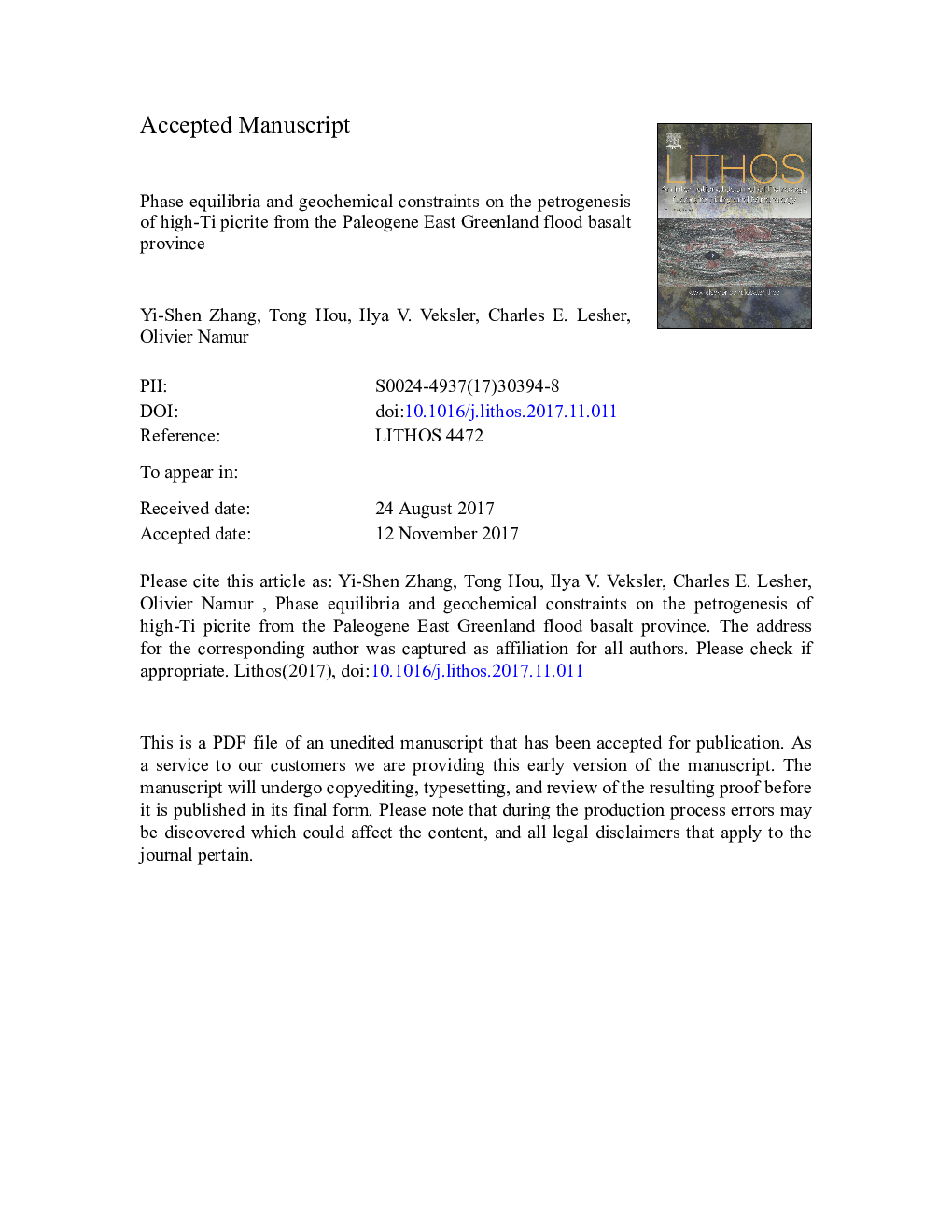| کد مقاله | کد نشریه | سال انتشار | مقاله انگلیسی | نسخه تمام متن |
|---|---|---|---|---|
| 8911749 | 1638623 | 2018 | 42 صفحه PDF | دانلود رایگان |
عنوان انگلیسی مقاله ISI
Phase equilibria and geochemical constraints on the petrogenesis of high-Ti picrite from the Paleogene East Greenland flood basalt province
ترجمه فارسی عنوان
تعادل فاز و محدودیت های ژئوشیمیایی در پتروژنیزاسیون تیتانیوم بالا تیتانیوم از سیل پالئوژن شرقی گرینلند در استان بازالت
دانلود مقاله + سفارش ترجمه
دانلود مقاله ISI انگلیسی
رایگان برای ایرانیان
کلمات کلیدی
موضوعات مرتبط
مهندسی و علوم پایه
علوم زمین و سیارات
ژئوشیمی و پترولوژی
چکیده انگلیسی
Phase equilibrium experiments have been performed on an extremely high-Ti (5.4 wt.% TiO2) picrite from the base of the Paleogene (~55 Ma) East Greenland Flood Basalt Province. This sample has a high CaO/Al2O3 ratio (1.14), a steep rare-earth elements (REE) profile, is enriched in incompatible trace elements, and is in chemical equilibrium with highly primitive olivine. This all suggests that the picrite is a near-primary melt that did not suffer major chemical evolution during ascent from the mantle source and through the crust. Near-liquidus phase relations were determined over the pressure range of 1 atm, 1 to 1.5 GPa and at temperatures from 1094 to 1400°C. They provide an important constraint on the petrogenesis of these lavas. The high-Ti picritic melt is multi-saturated with olivine (Ol) + orthopyroxene (Opx) at 1 GPa but has only Ol or Opx on the liquidus at lower and higher pressures, respectively. This indicates the primitive melt was last equilibrated with its mantle source at relatively shallow pressure (~ 1 GPa). Melting probably started at 2-3 GPa and the picritic melt was produced by 15-30% melting of the mantle source. Such a degree of partial melting requires a mantle with a high potential temperature (1480-1530ËC). The relatively low CaO content and high FeO/MnO ratios of the most primitive East Greenland picrites, the high Ni content of olivine phenocrysts and the presence of low-Ca pyroxene (i.e., pigeonite) at high pressure in our experiments all suggest that the mantle source contained a major component of garnet pyroxenite. Residual garnet in the source could adequately explain the low Al2O3 content (7.92 wt.%) and steep REE patterns of the picrite sample. However, simple melting of a lherzolitic source, even with a major pyroxenite component, cannot explain the formation of magmas with the very high Ti contents observed in some East Greenland basalts. We therefore propose that magmas highly-enriched in Ti were produced by melting of a metasomatized mantle source containing Ti-enriched amphibole and/or phlogopite.
ناشر
Database: Elsevier - ScienceDirect (ساینس دایرکت)
Journal: Lithos - Volumes 300â301, February 2018, Pages 20-32
Journal: Lithos - Volumes 300â301, February 2018, Pages 20-32
نویسندگان
Yi-Shen Zhang, Tong Hou, Ilya V. Veksler, Charles E. Lesher, Olivier Namur,
